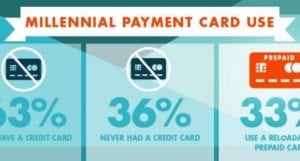Thus far, we’ve reviewed several different methods for settling debts, so that they are removed from your (or your client’s) credit reports. We’ve reviewed the use of debt validation techniques, as well as the pay for delete method, and arranging for the debt to be recalled by the original creditor, and paying that creditor directly. Now, let’s review the fourth and final method for removing debts from credit reports: settling the collection, and then disputing it.
Sometimes, pay for delete (where you pay off the creditor or collector, in exchange for a negative item being deleted from your credit reports), does not work. Why? Many debt collectors/buyers/original creditors are required to sign agreements with the three major credit bureaus, agreeing not to accept payment, in exchange for deletion of negative credit items. Basically, credit bureaus want credit reports to be as complete as possible, and thus reflect any collections or other negative accounts. For this reason, collectors sometimes reject pay for delete requests.
Fortunately, there is a simple way around this requirement. Under the Fair Credit Reporting Act, when you spot something inaccurate on your or your client’s credit report, you can dispute that item, with the credit bureaus. The credit bureau will forward this dispute along to the data furnisher (whoever placed that item on the credit report), for further investigation. If the data furnisher does not respond to the bureau’s investigation within 30 to 45 days after the dispute is submitted to the data furnisher, then the item in question, must be removed from your credit reports. A data furnisher is under no obligation to respond to consumer disputes; of course, if they do so, the disputed data which they reported, will be removed.
Why wouldn’t a data furnisher respond to a dispute? Before you or your client agrees to pay the collection, you will enter into a written agreement, whereby the furnisher will not respond to any dispute you file, challenging the collection, after it has been paid off. If the furnisher violates this agreement, you can likely take legal action against them.
By using this strategy, you or your clients can remove any type of negative item from a credit report, raising credit scores, and qualifying for the best lending terms possible. If you have any questions regarding this strategy, please contact us here at Tier One Credit. We’ll be glad to assist!
Shiva Bhaskar is an experienced consumer credit attorney, and the cofounder of Tier One Credit (www.tieronecredit.com), a credit consulting firm dedicated to helping every American enjoy the best credit score possible. Shiva can be reached by email at [email protected].



